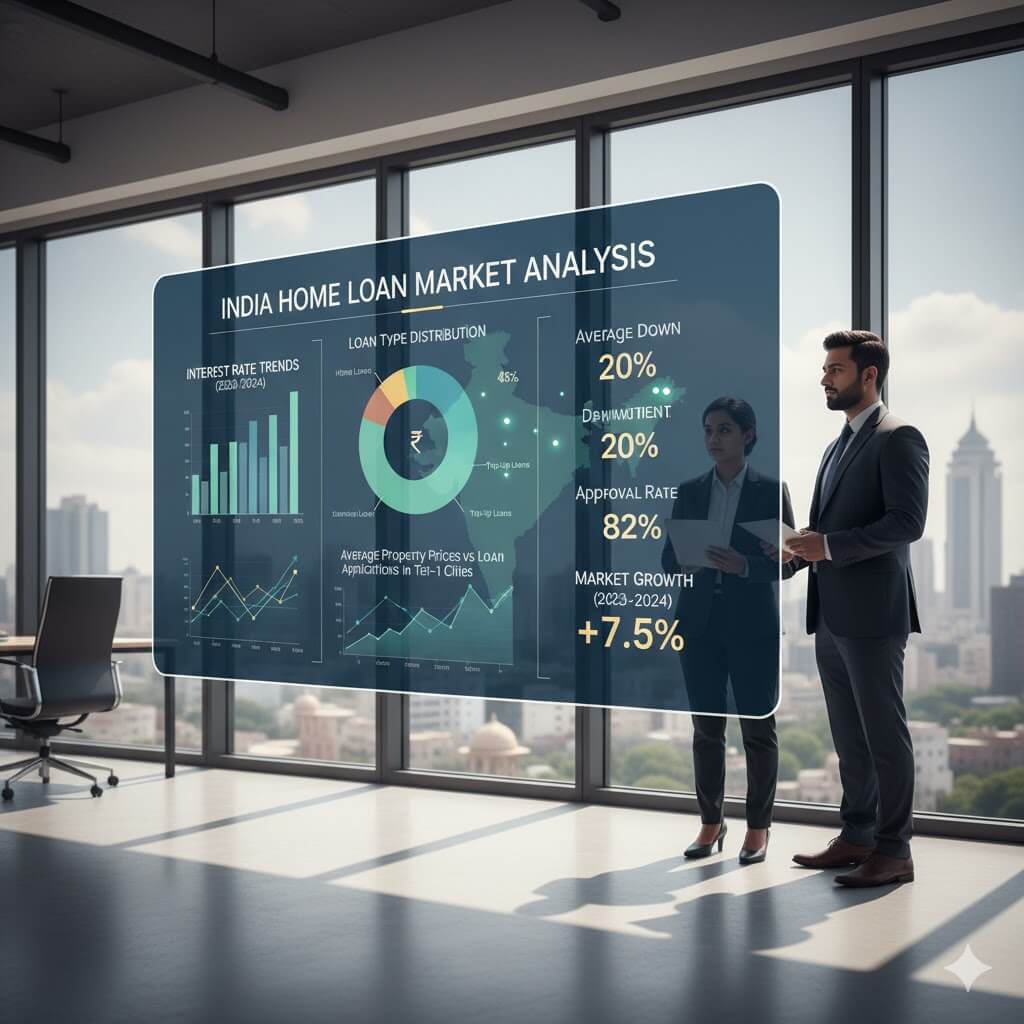Home Loan Default Trends & Risk Analysis in India
Explore the latest trends in home loan defaults in India, understand key risk factors, and learn how borrowers and lenders can manage financial risk effectively in 2025.

In 2025, the Indian home loan market remains largely stable, but emerging trends show increased stress in certain segments, particularly smaller and affordable loans. Understanding default trends and associated risks is crucial for both borrowers and lenders to make informed financial decisions. Here's a detailed look at the current landscape and practical strategies to mitigate risks.
1. Overview of Home Loan Defaults
Data from CRIF High Mark and other industry sources indicate that while high-value loans continue to grow steadily, smaller loans (under ₹10 lakh) exhibit higher delinquency rates. Borrowers in the affordable housing segment often face challenges due to limited financial buffers and regional economic vulnerabilities.
2. Key Risk Factors for Defaults
- High EMI Burden: When debt servicing exceeds 4050% of monthly income, borrowers are at higher risk.
- Unstable Income: Self-employed or irregular income borrowers are more vulnerable than salaried individuals.
- Multiple Loans: High levels of unsecured debt (credit cards, personal loans) can spill over and affect home loan repayment.
- High Loan-to-Value (LTV) Ratios: Borrowers taking large loans relative to property value have smaller safety margins.
- Affordable Housing Segment: Smaller loans in emerging areas are more exposed to market fluctuations and regional economic weaknesses.
- Interest Rate and Regulatory Changes: Rising rates increase EMIs; tighter regulations can limit refinancing or increase costs.
- Geographical and Market Volatility: Properties in developing areas or with weak infrastructure carry higher default risk.
3. Macroeconomic Influences
Inflation, rising living costs, and changes in policy rates directly impact borrowers' repayment capacity. Lenders are also affected by evolving RBI regulations, including risk-weighted assets and expected credit loss (ECL) frameworks, which emphasize early recognition of potential defaults.
4. Borrower Precautions
- Maintain a strong credit score and avoid over-leveraging with unsecured debt.
- Keep total debt obligations within a manageable portion of income.
- Consider fixed or hybrid interest rate loans to manage rate fluctuations.
- Increase down payments where possible to lower LTV ratios and reduce risk.
- Regularly monitor loan statements and stay informed about EMIs and interest rates.
- Use refinancing or balance transfer options to reduce costs when advantageous.
5. Lender Strategies for Risk Mitigation
- Use predictive analytics to detect early signs of repayment stress.
- Apply prudent LTV and income-to-EMI limits, especially for higher-risk segments.
- Stress-test portfolios under various macroeconomic scenarios.
- Monitor borrowers' overall financial health, not just the status of the home loan.
- Implement early-warning systems aligned with RBI's ECL and provisioning guidelines.
6. Outlook for 2025
While defaults in the Indian home loan sector remain lower than other credit segments, small-ticket loans and borrowers with high debt burdens face increased risk. With proper risk management, monitoring, and informed borrowing, the overall system remains stable. Borrowers can reduce risk by planning finances carefully, while lenders can maintain portfolio quality through disciplined underwriting and predictive analytics.
Conclusion
Understanding home loan default trends and risk factors is vital in 2025. Borrowers can protect themselves by maintaining financial discipline, choosing appropriate loan structures, and planning repayments carefully. Lenders, meanwhile, must leverage data-driven insights, technology, and prudent risk management strategies. With these practices, both borrowers and lenders can navigate the evolving home loan landscape confidently and sustainably.
About Ayushi Payal
Real estate expert with over 10 years of experience helping clients navigate the property market. Specializing in market analysis and market analysis.



































































































